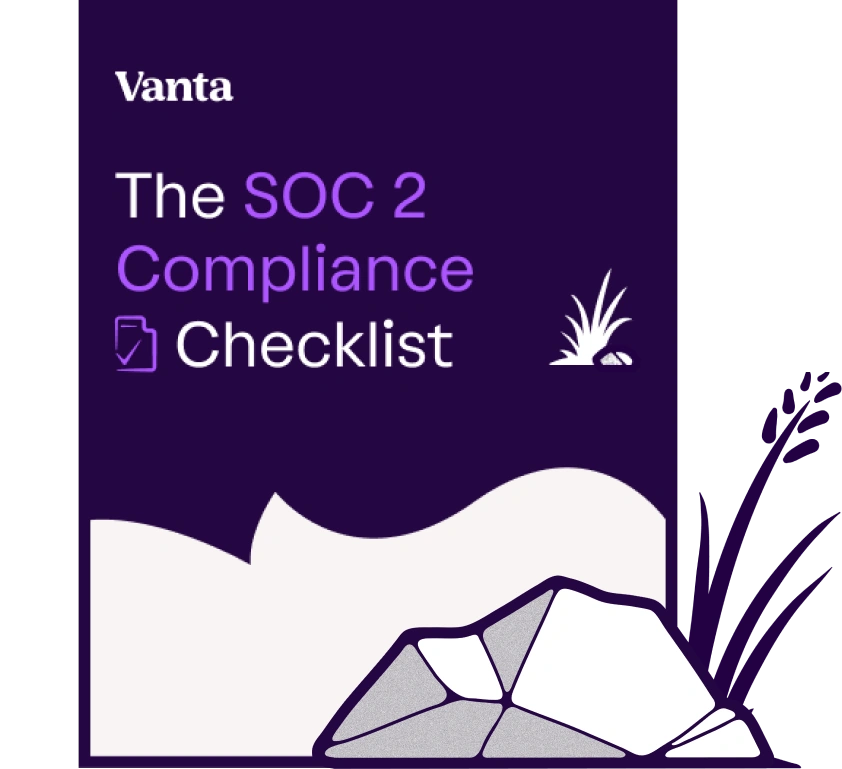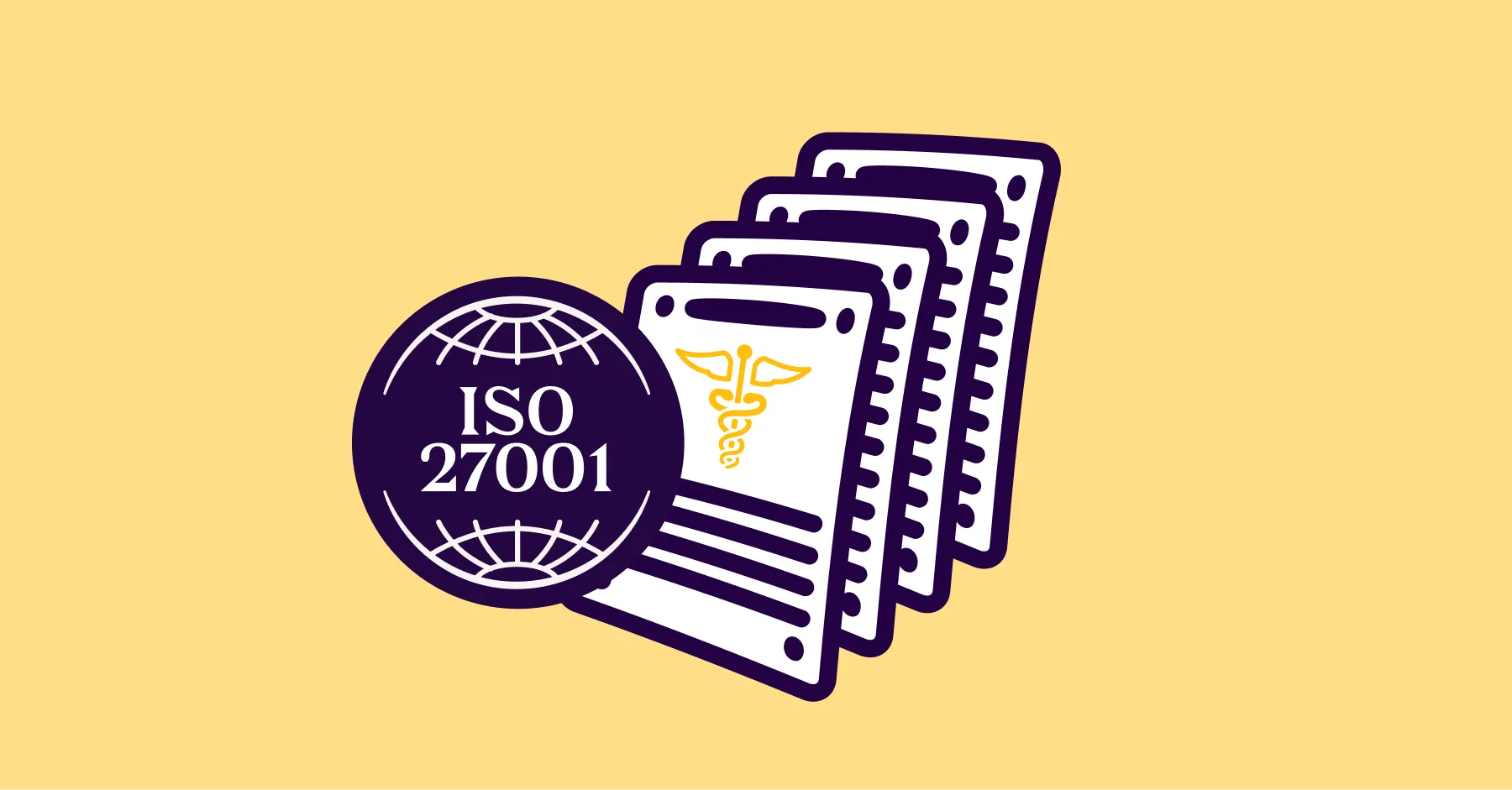Share this article
.png)
How SaaS companies can achieve ISO 27001 certification
Accelerating security solutions for small businesses Tagore offers strategic services to small businesses. | A partnership that can scale Tagore prioritized finding a managed compliance partner with an established product, dedicated support team, and rapid release rate. | Standing out from competitors Tagore's partnership with Vanta enhances its strategic focus and deepens client value, creating differentiation in a competitive market. |
There’s a growing sense of risk awareness in the SaaS space as companies face increasing scrutiny over information security. According to Vanta’s State of Trust report, nearly two-thirds of organizations report that their stakeholders expect proof of a robust security posture and alignment with popular cybersecurity standards.
ISO 27001 is one of the most widely recognized frameworks for demonstrating a strong security posture. For SaaS companies, this certification not only strengthens security but also improves trust with customers, partners, and regulators.
In this Vanta guide, you’ll learn about an eight step checklist toward ISO 27001 certification for SaaS companies, common challenges and how to tackle them.
What is ISO 27001 certification for SaaS companies?
ISO 27001 is a leading international standard that establishes structured guidelines for securing sensitive data and documenting your organization’s information security management system (ISMS). For SaaS companies, ISO 27001 offers a clear framework to identify, assess, and mitigate risks related to data security, infrastructure, and service delivery.
A significant advantage of ISO 27001 is that it’s tech-agnostic, so SaaS organizations can tailor controls to their specific architecture, business model, and risk environment.
While compliance with the framework is voluntary, many organizations pursue it as a powerful trust signal. An ISO 27001 certification gives SaaS companies demonstrable proof of their dedication to information security, providing a competitive advantage when working:
- In regulated industries
- With enterprise clients
- With large volumes of customer data
ISO 27001 is also beneficial for an organization’s broader compliance goals, since its controls align well with other industry-leading frameworks and regulations such as SOC 2, GDPR, and HIPAA, which can streamline governance resources.
{{cta_withimage2="/cta-blocks"}}
8 key steps for ISO 27001 for SaaS companies
While the specifics of ISO 27001 compliance will depend on a SaaS company’s tech stack, business model, and risk landscape, the general steps to achieve it are:
- Define the scope of your ISMS
- Perform a risk assessment and gap analysis
- Build and implement policies and procedures
- Conduct employee training
- Document the efficiency of your ISMS for auditors
- Undergo the certification audit
- Operationalize continuous compliance for your SaaS stack
- Review and update your ISMS
Step 1: Define the scope of your ISMS
The first step to ISO 27001 certification is defining the scope of your ISMS relevant to your SaaS product, infrastructure, and operations. Your findings in this step establish the foundation for the rest of the compliance process and impact how you assess risks, implement controls, and meet contractual SaaS obligations.
Make sure your scope captures the types of data, customer data flows, hosting environments, internal systems, and third-party dependencies. Since many SaaS organizations operate in regulated industries, you must consider aligning your scope to sector-specific requirements or expectations. For example, you’ll go over:
- HIPAA if you operate in the healthcare sector
- CMMC if you provide services to government agencies or contractors
- PCI DSS if you process, store, or transmit cardholder data
As part of scoping, categorize your data assets in groups based on the type of information they contain and its sensitivity. For instance, datasets with customer PII belong to a higher risk category than anonymized analytics data. The goal is to map different compliance obligations for each type.
Step 2: Perform a risk assessment and gap analysis
Next, conduct a risk assessment to identify potential vulnerabilities across your data assets (e.g., customer databases, admin panels, and third-party integrations). Consider these criteria in your evaluation:
- Inherent risk of each asset
- Impact of a potential breach
- Likelihood of a breach occurring
After scoring the risks, conduct a gap analysis to see how your current controls fare. You can rank each risk based on its likelihood, potential impact, and effectiveness of your controls in mitigating it. From there, you can identify the high-risk areas and make a list of priority safeguards you should implement for gap remediation.
Step 3: Build and implement policies and procedures
The next step after your risk assessments is to create and roll out policies, procedures, and technical safeguards that align with ISO 27001 standards. For larger organizations, addressing every single vulnerability may not be feasible—the key is to determine what risks to tolerate and what to mitigate.
Next in this step, you must create two foundational ISO 27001 documents:
- Statement of Applicability (SoA): The SoA outlines which of the 93 Annex A controls you have chosen to implement or exclude, with an explanation why. The most common choices for SaaS organizations include securing the development lifecycle and testing processes, intellectual property rights, and malware protection.
- Risk Treatment Plan: It provides a detailed overview of the risks identified during assessments, along with the specific actions, resources, and controls required to mitigate and minimize those risks.
The above documents will be reviewed during the certification audit, so update them regularly to reflect any changes in your security posture.
{{cta_withimage2="/cta-blocks"}}
Step 4: Conduct employee training
Employee training is equally essential for effective ISO 27001 compliance. Conduct regular training sessions focusing on compliance requirements, security procedures, and ways everyday workflows impact risk in your SaaS environment.
An effective way to ensure understanding across departments is through role-based training. For a SaaS business, the goal would be to help engineering, DevOps, customer support, legal, and other teams be aware of specific tasks they need to perform to safeguard sensitive data.
Log your training efforts by maintaining learning modules, completion reports, and attendance records so you have readily available, demonstrable proof for the certification audit.
Step 5: Document the efficiency of your ISMS for auditors
Comprehensive documentation is a core aspect of both achieving and maintaining ISO 27001 compliance. Have clear records of every aspect of your compliance workflows, such as controls, monitoring activities, and risk-related decisions.
When establishing documentation workflows, make sure to align them with both ISO 27001 practices and your internal accountability needs so that both internal and external auditors have detailed insights into your decision-making and compliance efforts.
This is also the stage where you conduct an internal audit to verify that the ISMS is functioning within ISO 27001 standards. This audit is mandatory and aims to:
- Identify compliance gaps before external audits
- Document results for management review
Where feasible, implement metrics, dashboards, and periodic reporting to track ISMS performance. This way, you have visibility into its effectiveness over time and can use the information to drive continuous improvement programs.
Step 6: Undergo the certification audit
Finally, it’s time to bring in an external auditor for the certification assessment. The audit happens in two stages:
- Stage 1: The auditor reviews the relevant documentation, such as your SoA, Risk Treatment Plan, and internal audit findings, to ensure that they meet ISO 27001 security standards.
- Stage 2: Here, the auditor will evaluate your ISMS to ensure that you’ve implemented all the necessary controls. Aside from the effectiveness of your controls, the auditor will assess whether they’re appropriate for your risk profile and security landscape.
You don’t need to start the second stage immediately after completing the first audit, but both stages must be completed in a six-month window. Once you pass both audits, you will receive your ISO 27001 certificate, which is valid for three years from the date it’s issued—provided you maintain compliance through annual surveillance audits.
Step 7: Operationalize continuous compliance for your SaaS stack
ISO 27001 requires annual surveillance audits to verify that your controls continue to meet compliance standards, making ongoing efforts just as important as the initial certification process.
An effective way to ensure ongoing ISO 27001 compliance is to integrate real-time monitoring and alerting processes into existing DevOps and CI/CD (continuous integration and continuous deployment) workflows to keep your ISMS aligned with fast-moving changes.
This is particularly important for multi-tenant systems and microservices where updates are shipped frequently. In these environments, stricter oversight is essential to flag and remediate control drift before it widens security gaps.
Step 8: Review and update your ISMS
As your SaaS business scales, review and update your ISMS to reflect the changes in your risk appetite and compliance obligations—whether from entering new markets, introducing vendors, or shipping major product changes.
Beyond scheduled reviews, establish procedures for additional assessments following any mergers, regulatory changes, and security incidents. These keep your ISMS agile, resilient, and audit-ready.
In high-risk SaaS environments, retrospective action may not be enough. You may need to integrate ISMS alignment into product development and change management processes so your compliance practices can keep pace with innovation.
{{cta_withimage2="/cta-blocks"}}
Challenges of ISO 27001 in a SaaS environment
Maintaining ISO 27001 compliance can be challenging and resource-intensive, especially in fast-moving SaaS environments. Some of the most notable challenges include:
- Frequent product and infrastructure changes: Regular code and architecture updates can introduce potential vulnerabilities that must be identified and addressed to maintain compliance
- Risk and gap assessments across complex architecture: Conducting risk and gap assessments of all third parties, networks, and systems can often delay the timely identification of vulnerabilities
- Frequent changes that require policy updates: Agile development can quickly lead to control drift if governance policies and procedures are not updated with it
- Monitoring load for CI/CD-heavy workflows: Continuous integration and development require ongoing monitoring efforts to ensure effectiveness, which can put significant strain on security and compliance teams
- Scattered documentation: Compliance and security evidence is often siloed across tools and departments, making streamlined documentation difficult
Clearly, due to the constantly changing nature of SaaS, manual compliance efforts don’t scale well and can even increase the risk of delays, control drift, and audit fatigue. The right compliance automation software centralizes controls, automates evidence collection, and flags control drift before it becomes a security gap.. With proper integration, dedicated ISO 27001 automation software like Vanta can help streamline monitoring, centralize documentation, and reduce the administrative burden on your teams.
Achieve ISO 27001 certification in SaaS environments with Vanta
Vanta is a trust management platform that helps organizations achieve ISO 27001 compliance efficiently through clear guidance, documentation, and resources. The platform can automate up to 80% of the required workflows—enabling many organizations to cut their compliance timelines by half.
Vanta’s ISO 27001 product is aligned with the latest version of the framework, ISO 27001:2022. Its features include:
- Checklists/templates for defining ISMS scope and identifying risks and vulnerabilities
- Automated evidence collection powered by 375+ integrations
- Comprehensive risk management built around ISO 27005 guidelines
- Streamlined risk and accountability tracking through a unified dashboard
If your organization is pursuing or already compliant under frameworks such as SOC 2 or the GDPR, you can leverage cross-mapping to align existing controls to overlapping ISO 27001 requirements. This way, you can eliminate the duplicative work.
You can also explore Vanta’s extensive network of trusted auditors and partners for in-depth compliance support. Schedule a custom demo for a walkthrough of the product tailored to your SaaS team.
{{cta_simple2="/cta-blocks"}}





FEATURED VANTA RESOURCE
The ultimate guide to scaling your compliance program
Learn how to scale, manage, and optimize alongside your business goals.


%20-%20Square2.JPG)













.png)

.svg)







.svg)


.svg)
.svg)
.png)
.png)
.png)